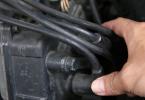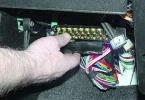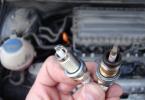If you are an experienced motorist, then you probably know what a steering rack is and why it should be constantly in working order. But if you are a beginner, knowledge about the steering rack will probably come in handy. In the article, we will consider what types of this mechanism are, how to determine a breakdown and what you will have to face in this matter.
Rack and pinion steering is the correct name for the part of the car that we are considering. Although the common expression of the steering rack has stuck for a long time and everyone understands what is at stake. This mechanism converts the rotation of the rudder shaft into left-right movement of the rods. And they, in turn, transfer power to the steering knuckles of the front wheels. In other words, the steering rack is a transitional link between the driver who turns the steering wheel and the wheels that turn. Now you yourself understand how important the performance of this device is.
On the other hand, the rack is a piston rod, the body of which is the power steering cylinder. The body contains a spool that distributes the fluid flows into the first or second cylinder cavity. Depending on which direction the driver turns the steering wheel, the side with the fluid, which is under pressure there, will also change.
The steering rack device also depends on the type of mechanism. The mechanical type is the simplest and most common. It can be installed on both front-wheel drive vehicles and rear-wheel drive vehicles.
In this case, the wheels turn directly due to the efforts made by the driver. And in order to reduce them as much as possible, a rail containing a variable subordinate number can be used.
The size of the steering clearance is very important for the good and correct operation of the car, and this indicator directly depends on the condition of the steering rack.
Therefore, we will consider the device of the mechanical section. In such a mechanical mechanism, the teeth of the rack change their pitch from the center to the edges. Therefore, when driving at high speed, the steering wheel becomes a little heavier and its maneuverability decreases. And on the road at low speed, for example, when parking, the steering wheel turns a little easier (since there is a smaller subordinate ratio).
The first domestic car with such a device is the VAZ-2110. The drivers considered it a big plus that when turning, due to the mechanical rack, the steering wheel automatically became in the initially level position. It was not necessary to exert effort in order to return the steering wheel to its original position after turning, it was enough just to release it.
Hydraulic rack device
How is the hydraulic steering rack structured? This question can be asked by the drivers of new cars in which the hydraulic booster has been introduced. The most basic difference from the mechanical type is that power steering is present here and it gives ease of control and its sharpness. 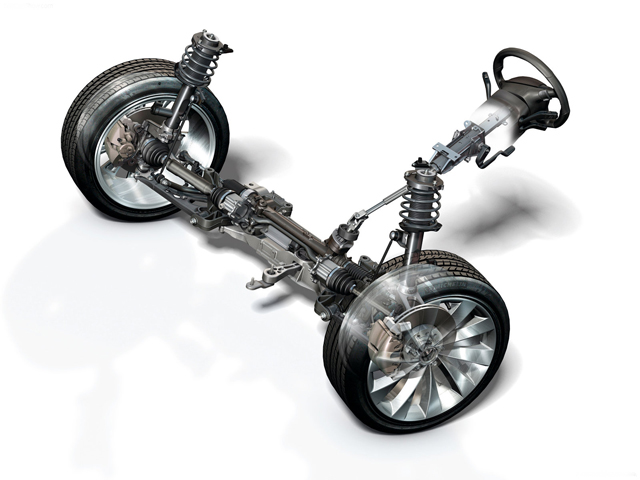
If we consider the structure of a hydraulic mechanism with a rack, then it consists of:
- Entrance.
- Spool bushings.
- Dust cap.
- Retaining ring.
- Spool oil seal.
- Spool.
- Bearing.
- Rod oil seal.
- The back.
- Rail stock.
- Retaining ring.
- Back seal.
- Piston rod.
- Stem bushings.
- Clamp nuts.
- Spool nuts.
- Spool plugs.
- Spool worm.
- Bypass tubes.
- Exit.
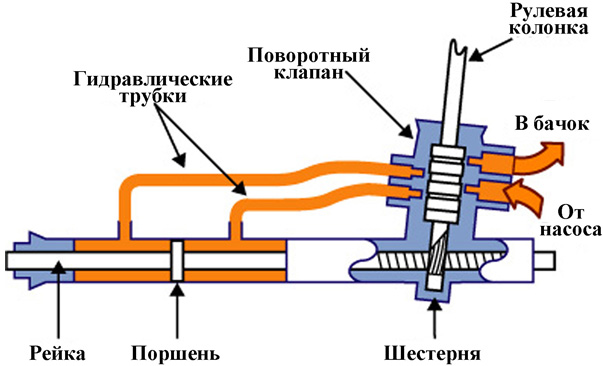 The steering rack is located either at the top (can be attached to the body, engine) or at the bottom (can be attached to a subframe, beam, body). The style of work, parameters and the possibility of wear do not depend on the place where the device is located. What is important is the attention the driver takes to the issue of operation.
The steering rack is located either at the top (can be attached to the body, engine) or at the bottom (can be attached to a subframe, beam, body). The style of work, parameters and the possibility of wear do not depend on the place where the device is located. What is important is the attention the driver takes to the issue of operation.
The scheme of operation of the hydraulic rack is the same as for mechanics. But here there is an additional element - a hydraulic booster. It is located just after the steering wheel and helps to facilitate steering.
Electric rail device
This device differs from the previous ones by the presence of an electric motor, which is located on the left side of the column (this installation method allows great savings in money, but exposes the driver to danger). The electric booster is mainly placed on the shaft or integrated with the steering rack. This placement improves the safety of the car.
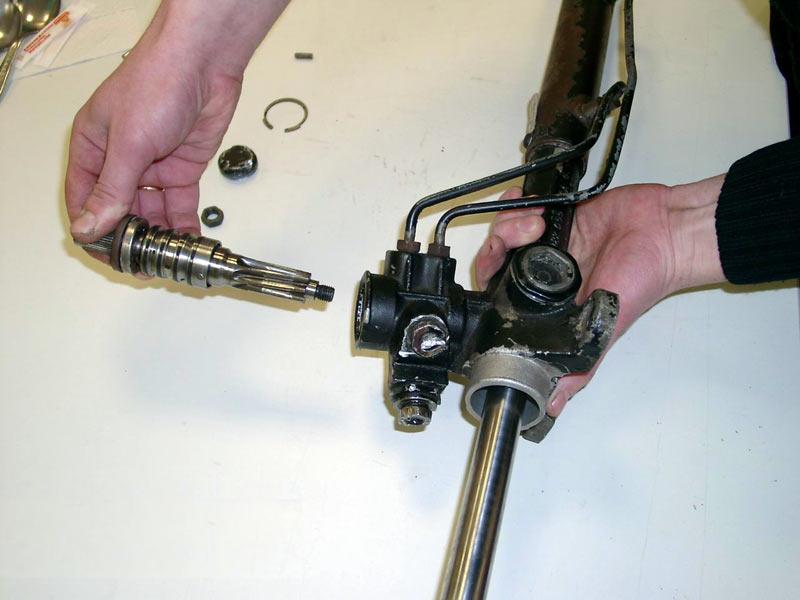 The structure of such a mechanism is as follows:
The structure of such a mechanism is as follows:
- Steering gear housing.
- Steering shaft.
- Torque sensor on the steering shaft.
- Pinion gear.
- Rail.
- Control block.
- Full shaft of the electric motor.
- Electric motor.
- Ball nut.
"If the installation of an electric amplifier is so dangerous, then why is it installed on a car?" - you ask. The answer is simple - a large number of positive aspects are also important here. Among them - a high efficiency compared to power steering, there is no dependence on air temperature, humidity, weather. It is also important that the electric motor is very reliable, it has no oil seals, no gaskets, no hoses. Its component parts will not wear out as quickly as other mechanisms.
There is no need to add fluid to the electric motor and steering rack (and in mechanical forms, the lack of lubrication is the main reason for the failure of the entire steering complex), respectively, constant maintenance of the car is not required. The electric motor will also turn on only when the steering wheel is moving, so there is no need to argue about its efficiency - this is a fact. 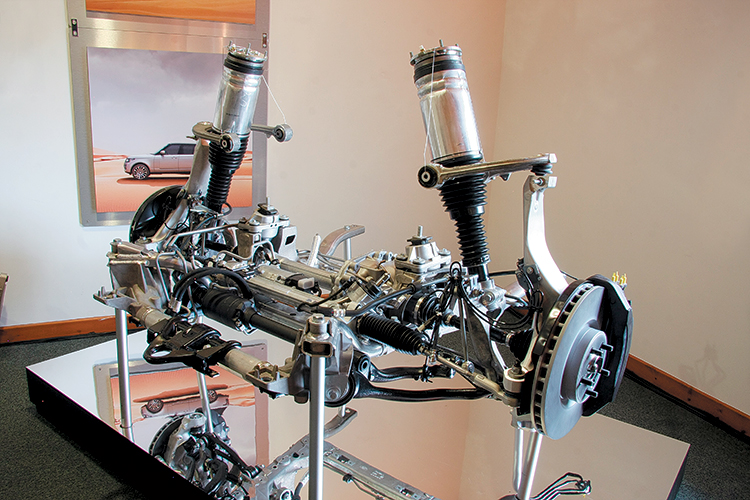
Whatever version of the steering rack is on the car, it is important to listen to its work and identify errors that are present. It can be knocking, creaking, whistling in the steering gear. And every driver should be alerted by these sounds. Even if they pass only one time, something is broken in the work - contact a specialist or look at the problem yourself.
Very often, to eliminate unpleasant sounds of a car, it is enough to lubricate all parts with oil or add liquid to a mechanical device. This will keep the machine working for many more years without the use of major repairs. It is better to fix small problems right away than they turn into big problems. Take care of your car and it will serve you well and for a long time!
Video " How to replace the steering rack "
The entry shows step-by-step instructions for replacing the steering rack. Watch this video and you can easily repeat all the steps on your car.
